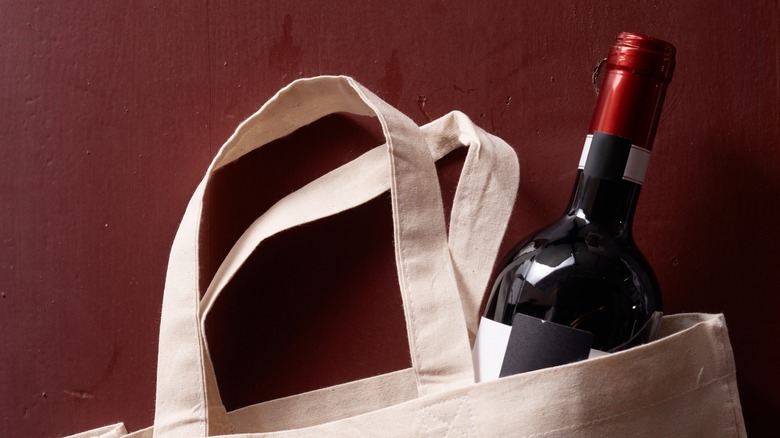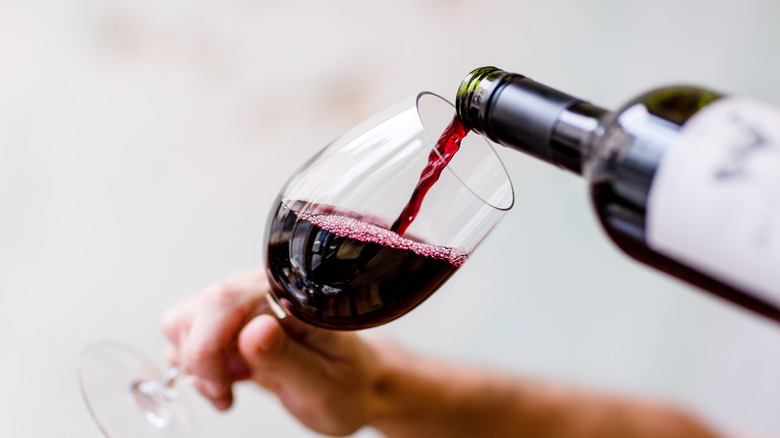The Restaurant Etiquette You Should Know Before Bringing Your Own Wine
Did someone say BYOB? Bringing your own bottle to a restaurant can give you the option of curating your dining experience, and can help make celebrations all the more special if you've been saving that bottle of aged Barolo or rare champagne for some time. However, there's one crucial rule of restaurant etiquette you should know before bringing your own wine to an establishment.
It's plausible that a restaurant might not yet have a liquor license or simply boast a modest wine list, notes Wine Access. However, should an eatery be fully equipped with a stellar cellar, you might still be swayed to bring a bottle from your own stock for personal reasons — reasons that shouldn't include cost. In fact, VinePair advises bringing a bottle worth at least $25 since showing up with cheap wine is greatly frowned upon.
That said, you'll likely also be faced with a corkage fee. Given that restaurant margins are super slim, alcohol sales can often be a significant source of revenue, which is why employing corkage fees (usually between $10 to $40) can compensate for the lost revenue and cover labor costs related to serving the wine (via Overproof). But, before you start contemplating which bottle to pack with you, there is one vital rule of restaurant etiquette that you need to know first.
Always call to confirm the restaurant's stance on BYOB
It's wise to never make assumptions. Even if you previously brought wine to an eatery in the past, Food & Wine recommends always calling ahead of time to ask whether you can bring your own bottles as this can help ensure a smoother experience if the beverage manager or sommelier is made aware beforehand. Plus, it's a great time to ask about the corkage fee and limitations on the number of bottles allowed.
Not sure what to bring or are unaware of the menu? Rather than haul the entire contents of your collection to a restaurant, Wine Enthusiast suggests packing a versatile red and a pre-chilled white or rosé in your wine tote — and definitely check that the wines aren't already on the list to avoid making a faux pas.
As for what to do when you finally get to the restaurant, after passing your wine over to your sommelier, don't forget your manners. Given that it's a courtesy for a restaurant to let you bring your own wine, there are some things you can do to show your gratitude. While not required, Wine Spectator shares that it's polite (and fairly standard practice) to order a glass or bottle from the wine list, in addition to offering the sommelier a taste. Lastly, this should go without saying, but make sure to tip!

